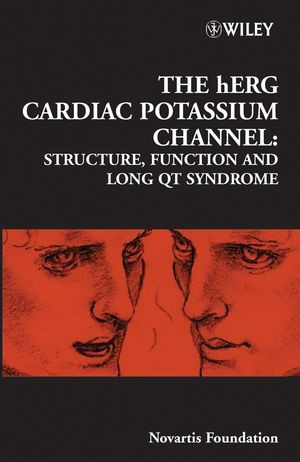

Most ebook files are in PDF format, so you can easily read them using various software such as Foxit Reader or directly on the Google Chrome browser.
Some ebook files are released by publishers in other formats such as .awz, .mobi, .epub, .fb2, etc. You may need to install specific software to read these formats on mobile/PC, such as Calibre.
Please read the tutorial at this link: https://ebookbell.com/faq
We offer FREE conversion to the popular formats you request; however, this may take some time. Therefore, right after payment, please email us, and we will try to provide the service as quickly as possible.
For some exceptional file formats or broken links (if any), please refrain from opening any disputes. Instead, email us first, and we will try to assist within a maximum of 6 hours.
EbookBell Team

4.0
76 reviewsIt features regulatory authority perspectives on preferred preclinical test systems and includes topics on hERG channel gating, regulation of functional expression, pharmacological properties of hERG/IKr channels, drug-induced long QT syndrome and preclinical evaluation and regulatory recommendations for assessing QT prolongation risks.
Better understanding of the role of the hERG channel in drug-induced cardiac arrhythmias should ultimately lead to the development of important, new and safer medicines.Content:
Chapter 1 Chair's Introduction (pages 1–3): Michael C. Sanguinetti
Chapter 2 Gating and Assembly of Heteromeric hERG1a/1b Channels Underlying IKr in the Heart (pages 4–18): Gail A. Robertson, Eugenia M.C. Jones and Jinling Wang
Chapter 3 Structure–Function Studies of the Outer Mouth and Voltage Sensor Domain of hERG (pages 19–43): Gea?Ny Tseng and H. Robert Guy
Chapter 4 General Discussion I (pages 44–45):
Chapter 5 Voltage Sensor Movement in the hERG K+ Channel (pages 46–56): David R. Piper, Michael C. Sanguinetti and Martin Tristani?Firouzi
Chapter 6 hERG Channel Trafficking (pages 57–74): Eckhard Ficker, Adrienne Dennis, Yuri Kuryshev, Barbara A. Wible and Arthur M. Brown
Chapter 7 Dynamic Control of hERG/IKr by PKA?Mediated Interactions with 14?3?3 (pages 75–94): Anna Kagan and Thomas V. McDonald
Chapter 8 General Discussion II (pages 95–99):
Chapter 9 Does hERG Coassemble with a ? Subunit? Evidence for Roles of MinK and MiRP1 (pages 100–117): Arun Anantharam and Geoffrey W. Abbott
Chapter 10 hERG Block, QT Liability and Sudden Cardiac Death (pages 118–135): Arthur M. Brown
Chapter 11 Structural Determinants for High?Affinity Block of hERG Potassium Channels (pages 136–154): John Mitcheson, Matthew Perry, Phillip Stansfeld, Michael C. Sanguinetti, Harry Witchel and Jules Hancox
Chapter 12 General Discussion III (pages 155–158):
Chapter 13 Physicochemical Basis for Binding and Voltage?Dependent Block of hERG Channels by Structurally Diverse Drugs (pages 159–170): Michael C. Sanguinetti, Jun Chen, David Fernandez, Kaichiro Kamiya, John Mitcheson and Jose A. Sanchez?Chapula
Chapter 14 In Silico Modelling?Pharmacophores and hERG Channel Models (pages 171–185): Maurizio Recanatini, Andrea Cavalli and Matteo Masetti
Chapter 15 The Long QT Syndrome: A Clinical Counterpart of hERG Mutations (pages 186–203): Peter J. Schwartz
Chapter 16 Cellular Mechanisms of Torsade de Pointes (pages 204–224): Steven Poelzing and David S. Rosenbaum
Chapter 17 Expression and Role of hERG Channels in Cancer Cells (pages 225–234): Annarosa Arcangeli
Chapter 18 TRIad: Foundation for Proarrhythmia (Triangulation, Reverse Use Dependence and Instability) (pages 235–250): Luc M. Hondeghem
Chapter 19 Drug?Induced QT Interval Prolongation—Regulatory Guidance and Perspectives on hERG Channel Studies (pages 251–285): Dr. Rashmi R Shah
Chapter 20 Closing Remarks (pages 286–287): Michael C. Sanguinetti